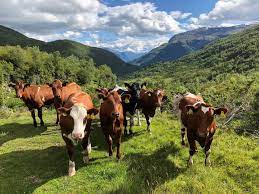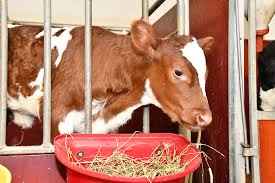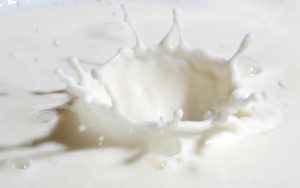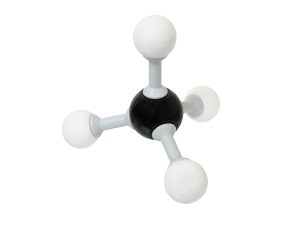 22 Jul 2022
22 Jul 2022
High-digestible silages in ruminant diets have been shown to influence concentrate level requirements while influencing feed intake, milk yield, and methane production.
Introduction
Ruminants’ unique capacity to digest fiber, a growing human population which increases competition over croplands, and higher feed concentrate prices are all reasons that highlight the importance of forage inclusion in ruminant nutrition.
Silage making is a widely used conservation strategy for forage as it enables to preserve animal feed (Bernardes et al., 2018) with minor energy losses compared to drying methods(Mahanna and Chase, 2003). However, due to the fact that silage digestibility varies greatly and depends on several factors, high-producing dairy cows are often fed high levels of concentrates in order to ensure adequate levels of energy and nutrient intake. Allowing animals to meet their physiological and productive requirements (Abrahamse et al., 2008).

Nonetheless, various studies have shown the advantages of including high-digestible silages in dairy cow diets, exhibiting improved milk yields (Randby et al., 2012; Alstrup et al., 2014; Weisbjerg and Johansen, 2017). Álvarez et al. (2020) established a mathematical correlation showing that high-digestible silages can induce high milk yields with lower concentrate levels compared with low-digestible silages. At low levels of concentrate, higher milk yields were achieved with increased silage digestibility. As concentrate intake levels increase, energy-corrected milk (ECM) differences between silages disappear due to a lower ECM marginal response with high-digestible silages.
The effect of silage digestibility and concentrate level on methane emissions requires a combined evaluation.
The objective of the following study was to test the meta-analysis of Álvarez et al. (2020) by challenging cows with different silage digestibility and evaluating the interaction between silage digestibility and concentrate level on cow responses. Assessing the effects of changes in silage digestibility and concentrate supply on milk yield, feed intake, body weight, and methane production. The aim was to investigate further and evaluate such scenarios from a climate perspective, measuring methane emissions for different silage digestibility and concentrate levels.
Materials and Methods
The experiment was conducted at the Animal Production Experimental Center at the Norwegian University of Life Sciences.

60 Norwegian red cows were used for the experiment. Comprised by: 26 first lactation cows, 22 second lactation cows, and 12 older cows which were loosely housed with concrete floors and rubber mats with sawdust for the whole experiment.

The experiment was a complete randomized block design including 3 periods:
Results and Discussion
 Intake
IntakeTotal DMI was, on average, 3.0 kg of DM/d higher for cows in the HDS than those in the LDS (P < 0.001). Also, DMI increased 0.53 kg of DM/d with each increase in kilograms of DM/d of concentrate offer (P < 0.001), regardless of silage digestibility treatments, as no interaction was found between silage digestibility and change in concentrate offer (P = 0.76). Higher DMI for the HDS group could be explained by DMIs, which was, on average, 3.8 kg of DM/d higher for the HDS group than for the LDS group (P < 0.001). No interaction was found for DMIs between silage digestibility and concentrate offer.

Milk yield was, on average, 3.0 kg higher for the HDS than the LDS treatment (P = 0.001) and increased linearly by 0.49 kg of milk per kg increased offer of concentrate (P = 0.01), regardless of silage digestibility, as no interaction was found (P = 0.90). Similar response was found for ECM, with, on average, a 3.5 kg higher yield for the HDS than the LDS treatment. Irrespective of silage digestibility, ECM showed a linear increase in 0.66 kg per kg of DM of concentrate offer increase, as no interaction was found (P = 0.13). Silage digestibility did not affect fat and protein concentrations.
For both silage digestibility treatments, the lactose concentration increased with an increased concentrate offer (P = 0.02). Fat, protein, and lactose yield were highest for the HDS treatment (P = 0.03 for fat yield and P = 0.003 for protein and lactose yield) and were affected by concentrate offer (P < 0.05), although no interaction was detected for any of these parameters (P > 0.10).
Methane emissions
Total methane production increased with increased concentrate intake, regardless of silage digestibility. Methane emissions per unit of milk were affected by total DM intake rather than by changes in silage digestibility and concentrate level.


Source: Abstract taken from “High-digestible silages allow low concentrate supply without affecting milk production or methane emissions.”
Subscribe now to the technical magazine of animal nutrition
AUTHORS

Nutritional Interventions to Improve Fertility in Male Broiler Breeders
Edgar Oviedo
The Use of Organic Acids in Poultry: A Natural Path to Health and Productivity
M. Naeem
Synergistic Benefits of Prebiotics and Probiotics in Poultry, Swine, and Cattle
Gustavo Adolfo Quintana-Ospina
Hybrid Rye Potential in Laying Hen Feed Rations
Gwendolyn Jones
A day in the life of phosphorus in pigs: Part I
Rafael Duran Giménez-Rico
Use of enzymes in diets for ruminants
Braulio de la Calle Campos
Minerals and Hoof Health in the Pregnant Sow
Juan Gabriel Espino
Impact of Oxidized Fats on Swine Reproduction and Offspring
Maria Alejandra Perez Alvarado